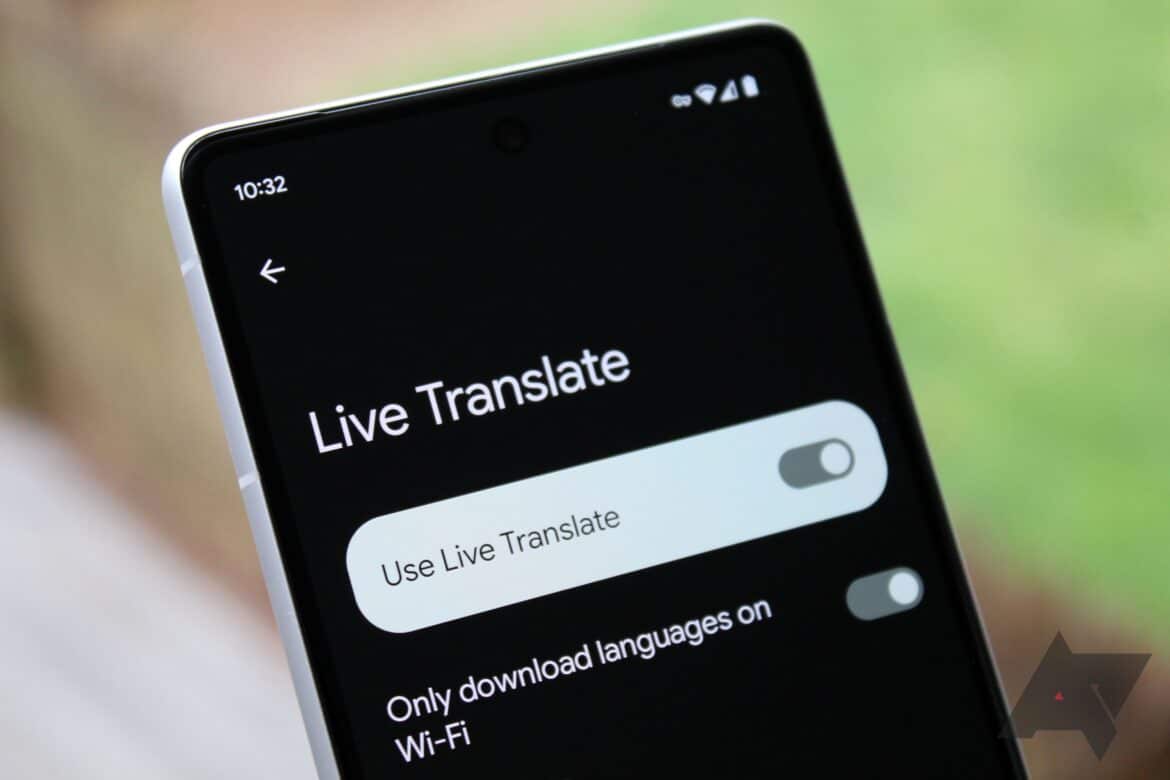Google Live Translator: What’s behind it
Google Live Translator offers a practical solution for overcoming language barriers. This feature is particularly useful in situations where fast and accurate translations are required, such as when traveling or at international business meetings.
- Google Live Translator is a feature within the Google Translate app that allows you to translate spoken language in real time.
- It is particularly helpful for communicating in foreign-language countries or when talking to international partners.
- This technology uses advanced speech recognition and translation algorithms to deliver accurate results.
- To use Live Translator, you need a mobile device with a microphone and an internet connection.
How to activate Google Live Translate
There are several ways to activate Google’s live translation feature, depending on your device and how you want to use it. On Pixel smartphones, live translation is integrated directly as a system feature, while other Android users can use the translation app.
The most important steps are listed below, both for Google Translate and specifically for Pixel phones.
- Live translation with the Google Translate app: Open the Google Translate app on your smartphone. Tap on “Conversation” or “Live Translation.” Select the source and target languages at the bottom. Allow the app to access your microphone. Tap on the microphone for one of the languages and speak; the app will translate what you say directly and display it on the screen.
- Additional feature: Tap to Translate: Open your profile picture at the top of the app and go to Settings. Activate “Tap to Translate” there. Allow the option “Show over other apps.” A small button will appear at the edge of the screen, which you can use to translate text directly in other apps.
- Live translation on Google Pixel phones: Open the device settings. Go to “System” and select “Live translation.” Activate “Use live translation.” Download the appropriate language packs if necessary. You can set a default language as well as additional languages. Once activated, your Pixel will automatically translate incoming messages or video audio in real time without you having to copy text.
- Notes and tips: In “split screen” mode, both conversation partners can read their language and the translation simultaneously. Depending on the language, the feature requires an internet connection and works best on current Android versions and Pixel models. If you encounter any problems, check that microphone and overlay permissions are enabled for the Google Translate app.
- These steps enable quick and convenient live translations – for conversations, apps such as WhatsApp, or directly in your device’s system interface.
Advantages and disadvantages of Google Live Translator
Google Live Translator offers numerous advantages that make it an indispensable tool for international communication. However, there are also some limitations that users should be aware of.
- Advantages: Wide range of languages with over 100 supported languages, covering almost every language barrier. Versatile input options: text input, voice input, and translation via camera (e.g., street signs or documents). Real-time translation with very fast output of translations. Offline function: Downloadable language packs enable translations even without an internet connection. Free to use with comprehensive functions for everyday life and travel.
- Disadvantages: Inaccurate translations, especially with longer sentences, technical texts, or linguistic nuances. Translations are often word-for-word, without taking context or cultural subtleties into account. Translation quality varies greatly depending on the language. Some language combinations are translated indirectly via English, which increases the likelihood of errors.
- No professional precision; a professional translator is recommended for important or business documents. There are data protection risks, as entered data can be processed and stored online. Lack of cultural adaptation and insufficient consideration of idioms or idiomatic expressions lead to misunderstandings.
- In short: Google Live Translator is a handy tool for quick, free translations in everyday life and when traveling, supports many languages and input types, and even offers offline modes. However, it has its limitations when it comes to complex, professional, or culturally demanding translations, as it does not reliably capture context and nuances, and there are data protection issues.
- This makes it ideal for personal use, but less suitable for professional translations or sensitive content.
Tips for getting the most out of Google Live Translate
These tips will help you get the most out of Google Live Translator and make it easier to communicate with people who speak other languages.
- Use the “Conversation” feature in the Google Translate app to translate conversations live. Set the source and target languages, tap the microphone icon for each language, and speak clearly, as the tool recognizes clear pronunciation better.
- Grant the app permission to access the microphone for live translation to work.
- For multilingual conversations, you can activate “split screen” mode, which allows both speakers to see their translations on one half of the screen. Automatic speech recognition switches between languages, or you can activate the microphone manually.
- Download the languages you need for offline use so that translations work even without the internet, ideal for when you’re on the go.
- Use the Google Translate widget on the home screen to quickly access translations, e.g., to translate copied text.
- When entering text, avoid ambiguities, figurative language, and very long or complex sentences. Instead, use clear, simple wording or synonyms to achieve better translation results.
- Live translation, including AI support, also works well in noisy environments and in up to 71 languages. The app automatically reads longer pauses aloud so that the other person can also hear the translation.
- You can use the transcription function to see spoken language written down and translated in real time. Texts can be saved, copied, or shared. The text size can also be adjusted.

